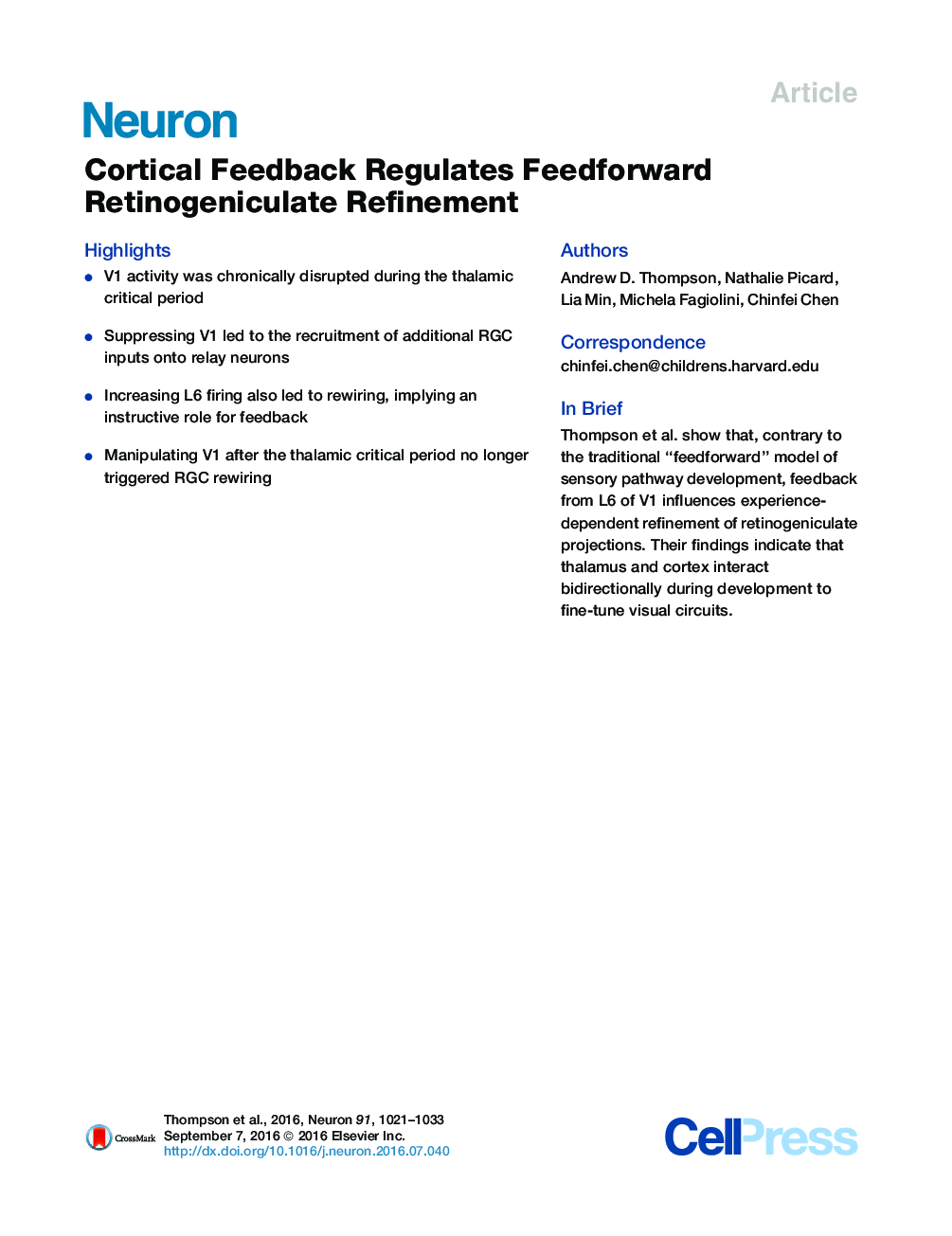| Article ID | Journal | Published Year | Pages | File Type |
|---|---|---|---|---|
| 4320608 | Neuron | 2016 | 13 Pages |
•V1 activity was chronically disrupted during the thalamic critical period•Suppressing V1 led to the recruitment of additional RGC inputs onto relay neurons•Increasing L6 firing also led to rewiring, implying an instructive role for feedback•Manipulating V1 after the thalamic critical period no longer triggered RGC rewiring
SummaryAccording to the prevailing view of neural development, sensory pathways develop sequentially in a feedforward manner, whereby each local microcircuit refines and stabilizes before directing the wiring of its downstream target. In the visual system, retinal circuits are thought to mature first and direct refinement in the thalamus, after which cortical circuits refine with experience-dependent plasticity. In contrast, we now show that feedback from cortex to thalamus critically regulates refinement of the retinogeniculate projection during a discrete window in development, beginning at postnatal day 20 in mice. Disrupting cortical activity during this window, pharmacologically or chemogenetically, increases the number of retinal ganglion cells innervating each thalamic relay neuron. These results suggest that primary sensory structures develop through the concurrent and interdependent remodeling of subcortical and cortical circuits in response to sensory experience, rather than through a simple feedforward process. Our findings also highlight an unexpected function for the corticothalamic projection.
